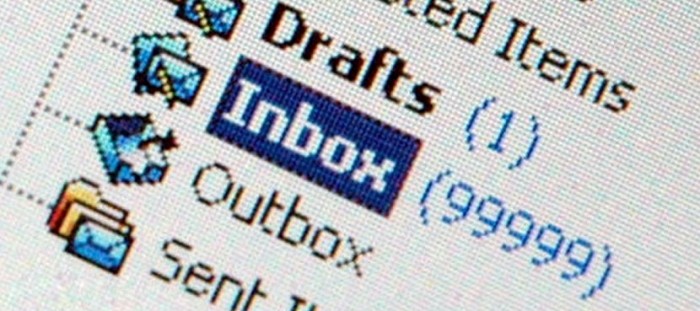Interest in Artificial Intelligence has never been higher. Top technology companies are investing significant resources: Amazon uses A.I to recommend products and operate robots in its fulfilment centres , Facebook uses bots to rank posts in its news feed and Google has used it to enhance its search engine and street view applications.
Now it’s generally assumed that A.I. and automation will play an increasing role in the workplace.
It’s possible that workflows may be streamlined and what was once a multi-step process across several teams and data systems may soon be a spoken command, informed by continually evolving A.I. insight. In many ways, these ideas seem fanciful or at the very least, unfeasible, and it’s difficult to visualise the face this system wears. How might we interact with this digital mind? And how would we democratise it across an organisation ?
You may have heard of ‘bots’ in relation to A.I., hacking, and in the form of chatbots. These are self-contained applications that automate a specific task, and when they’re integrated into communication channels like Facebook messenger, they can streamline and humanise processes which were previously cumbersome and unfriendly. Siri and Cortana can be considered bots, though more practical bots are capable of taking you through a conversation to complete tasks such as ordering flowers, finding insurance, scheduling meetings, booking flights and managing your bank account. This ability to reframe a process in a more natural and familiar way makes chatbots appealing as consumer interfaces, but can also do the same for data-intensive work environments.
A typical day at the office usually involves being bombarded with emails, juggling data, responding to requests, attending meetings and continuously having to extract only the items worthy of action. Then, once we’ve prioritised those actions, we’re continually context-switching to manage these alongside new issues which arise – some of which being very manual and time consuming, and others requiring more focus and analysis.
Dealing with all this means productivity, accuracy and the quality of decision making inevitably take a hit, and we’re left wondering if there’s budget for a Personal Assistant. Whilst some systems and tools are capable of automating the more repetitive and manual tasks, bots can take this even further and address another major issue plaguing large organisations : disjointed team communication.
Databases and comms are typically siloed, but in our day-to-day activities, we find that they are inextricably linked. You log into your database to access the information and export that information out to be emailed. Then, having finally received a reply, you type that back into the database and alert the necessary teams. Rinse and repeat at broken intervals throughout the day. This admin of liaising between data and people, as well as external systems, comes in various forms. However, bots can seamlessly help us bridge these gaps.
When they’re closely integrated with both your data and company communication channels (such as Slack), bots are able to perform several functions. For instance, they monitor data changes and relay this information to the relevant teams, alerting us to consequences and suggesting further action where necessary.
- They prioritise tasks and allocate against the stakeholders in the best position to perform them, so we’re focussing on the important decisions as soon as we step into the office, ensuring we’re on schedule and clearing bottlenecks.
- They act as mediators between teams, so we’re not always chasing colleagues for updates or trying to overload them.
- They are your domain experts and will validate your data before it’s sent, avoiding the email tennis that ensues.
- They automate repetitive actions, and turn complex, multi-step, multi-user processes into concise yet intuitive conversations, lessening the burden of new hire training.
- They provide reports in anticipation of an upcoming meeting. They schedule meetings in anticipation of a conflict in data.
- They suggest you take a 15 minute break because they foresee that it’ll be the last 15 minutes you’ll have free for a while.
In short, they are your ever-present, unrelenting and well-informed personal assistant.
Now, couple all of the above with machine learning, and you have a constantly evolving system that can fully leverage this lake of data and relationships to improve, suggest and project a path for every individual in the organisation , assisting high-level decision making whilst catering for our quirks and tendencies. It’s a powerful and empowering concept, and one that brings clear business and interpersonal benefits.
Bots will deliver significant time-savings across the board. They will increase data accuracy, transparency and accessibility and can rapidly scale with demand. Businesses will have greater control over timescales and faster feedback loops on initiatives. Chat-based bots will inspire increased collaboration and creativity, bringing teams together in open and purposeful discourse.
So how do we get on board?
 As with any change, there are challenges and considerations which require a fundamental understanding of your technology stack, business processes and talent pool. However, bots align themselves with this trend of microservices and portability. They can happily start life as small, composable units, integrated and iterated gradually within a narrow field, before becoming part of a larger network of bots and 3rd party A.I. tools. There will be an initial stage of mutual learning as we train them in our processes and we ourselves realise their potential. The team chat app, Slack, is a good example of a platform that is able to leverage this concept and support a community of bot builders. And it’s this universal freedom for bots to communicate across data, external services, devices and users, that will dictate how organically this system can grow and adapt with both your business and market.
As with any change, there are challenges and considerations which require a fundamental understanding of your technology stack, business processes and talent pool. However, bots align themselves with this trend of microservices and portability. They can happily start life as small, composable units, integrated and iterated gradually within a narrow field, before becoming part of a larger network of bots and 3rd party A.I. tools. There will be an initial stage of mutual learning as we train them in our processes and we ourselves realise their potential. The team chat app, Slack, is a good example of a platform that is able to leverage this concept and support a community of bot builders. And it’s this universal freedom for bots to communicate across data, external services, devices and users, that will dictate how organically this system can grow and adapt with both your business and market.
The advent of A.I. into common business practices offers us a chance to look at the mechanisms underpinning our daily business processes, the way we communicate and our ability to react to and lead change. Bots represent a stepping stone to a grander design, yet it is this ability to enhance not only the communication between us and the machine, but also with each other, that makes them such a powerful ally.




